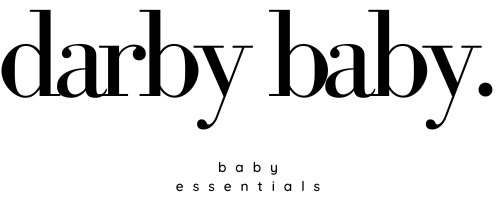Hey there super mum and dads!
If you're reading this, chances are you're ready to embark on an exciting new journey with your little one—introducing solid foods. At Darby and Co, we believe in offering the best baby brands at competitive prices to make your parenting journey easier. So buckle up, and let's dive into the world of baby eating solids.
Introduction: Preparing for Solid Foods
Introducing solid foods to your baby is a major milestone and can be both exciting and daunting. In this section, we'll talk about when to start solids, signs your baby is ready, and how to choose the right foods.
1. When to Start Solids
Most health professionals recommend introducing solids to your baby's diet around the 6-month mark. However, it's essential to look for signs of readiness in your baby rather than focusing solely on age.
2. Signs Your Baby is Ready
Before you start offering solids, make sure your baby:
- Can sit up without support
- Shows interest in your food
- Can hold their head up and turn it away when full
- Has lost the tongue-thrust reflex (automatically pushing solids out of their mouth)
3. Choosing the Right Foods
When starting solids, opt for single-ingredient, iron-rich foods like pureed meat, iron-fortified infant cereal, or pureed beans and lentils. Gradually introduce new foods, textures, and flavors.
Body: Navigating the World of Baby Eating Solids
Now that you know when and how to start, let's dive into the nitty-gritty of baby eating solids, including types of foods, how to serve them, and essential tips for success.
1. Purees vs. Baby-Led Weaning
There are two popular approaches to introducing solids: traditional purees and baby-led weaning (BLW). Purees involve spoon-feeding your baby smoothly blended foods, while BLW allows babies to explore and self-feed with soft, easy-to-grasp finger foods.
2. Serving Solids
When serving solids, remember to:
- Keep the environment calm and relaxed
- Always supervise your baby while eating
- Offer a variety of textures and flavors
- Start with small amounts and gradually increase
3. Essential Tips for Success
Here are some key tips to help make the transition to solids a breeze:
- Be patient and expect messes
- Watch for signs of allergies and sensitivities
- Follow your baby's cues to avoid overfeeding
- Encourage self-feeding with age-appropriate utensils
Conclusion: Embracing the Journey
Introducing solids is an exciting and messy adventure. Remember to be patient, follow your baby's cues, and trust your instincts. As you explore the world of baby eating solids, don't forget that Darby and Co is here to help with a fantastic selection of feeding essentials, baby clothing, and more. Happy feeding, and enjoy this incredible milestone with your little one!

